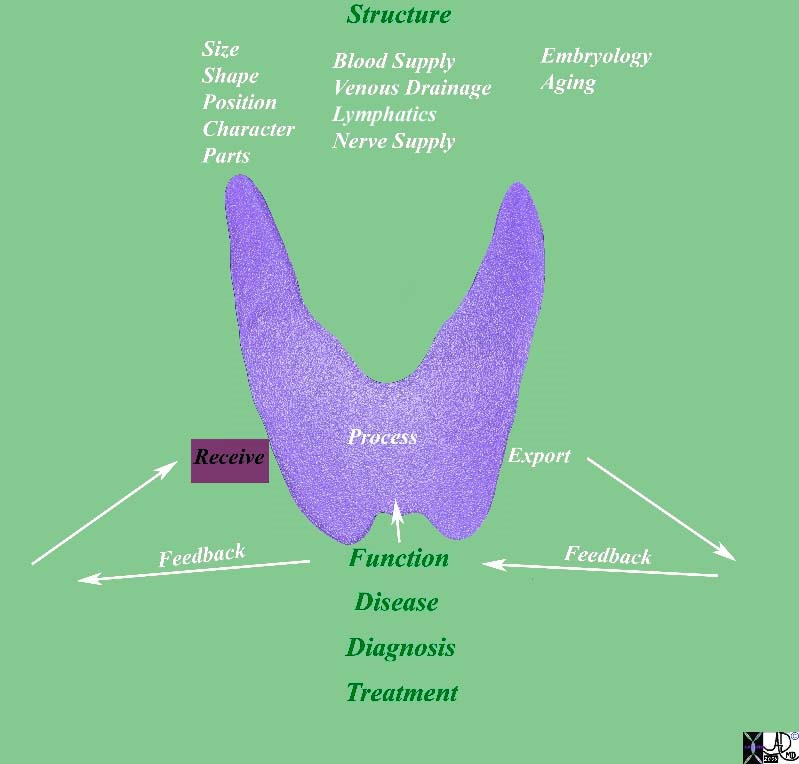Receiving Function
The Common Vein Copyright 2010
Introduction
All biological structures receive a product that they eventually modify and process so that they will be able to export a product that is valuable to the system at large. In the case of the thyroid gland it needs iodine which is the precursor to all the functioning thyroid hormones.

Receiving the Products |
|
This diagram frames the underlying principles and approach to the thyroid in this module and focuses on the receiving function of the thyroid Image Courtesy Ashley Davidoff MD Copyright 2011 93852g05.8sb01c |
Iodine Metabolism
Iodine is the essential component of any thyroid hormone. It is not produced by the human body, and therefore its only source is the diet. The most common source is iodized salt.
The Word Health Organization recommends a daily dietary iodine intake of 150 mcg for adults, 200 mcg for pregnant women given the importance for fetal requirements and around 100 mcg for children.
Iodine is well absorbed by the gastric mucosa and once in the bloodstream will get actively trapped by the thyroid gland to concentrate from 30 to 100 times more when compared with the plasma level. A normal diet contains around 400 mcg of iodine daily but if the intake decrease below 100 mcg daily, after a period of 3 months hypothyroidism will evolve. In many inland and mountains regions the iodine has been leached from the soil and therefore iodine deficiency becomes apparent resulting in thyroid gland enlargement (goiter). Iodine deficiency affects specially the fetus and children, because thyroid hormones are key for normal neurologic development and for normal growth; the most important and preventable consequence of iodine deficiency is mental retardation. Iodine is excreted mostly by the kidneys, and its measurement in the urine is a reflection and a a means to evaluate dietary intake.
